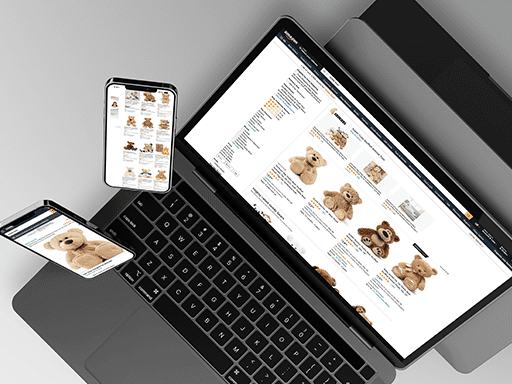You’ve built your Amazon Ads campaigns and added your products – now what? You need a detailed, data-driven Amazon campaign bidding strategy.
Look no further. Using this guide, we will explain the basics of bidding on Amazon. Then we will explore the difference between dynamic and fixed bidding — to find out which is right for you. Next, we will look at automatic campaigns, suggested bids, and lastly special situations like Prime Day and Black Friday.

The Basics of Amazon Bidding
Here you will build the foundation of your Amazon campaign bidding strategy. The key to this foundation starts with tracking costs, commission, and ACoS (Advertising Cost of Sale). By measuring cost – you will understand the real profit that your ads generate – so you can make more accurate decisions about where to direct spend. Next we’ll look at whether automatic targeting or manual targeting is best for your business.
Get the visual guide to Amazon campaign types here.
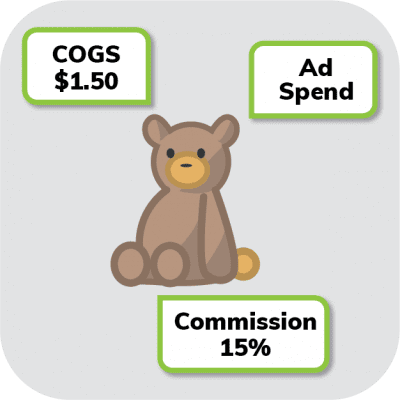
1. Profit-Driven Bidding
One key concept underpins all other Amazon bidding concerns: profit. Profit-driven management is the single most important factor in Amazon campaign optimization. Profit (or contribution, as we usually call it) is the amount of revenue remaining after all other costs including ad spend are accounted for.
Costs:
To understand the impact of your bidding decisions, you’ll need to understand the costs incurred when those bids lead to a sale. The largest cost is usually the cost of goods, or the cost required to replace the goods that are sold. Include this cost on the adgroup level, to simplify bidding decisions.
Commission:
Don’t forget about commission, either. Typically, these charges are around 15 – 20% of product sales, but can be as high as 45% depending upon the product in question. That can really add up – some products may not even be worth advertising once all these costs are accounted for.
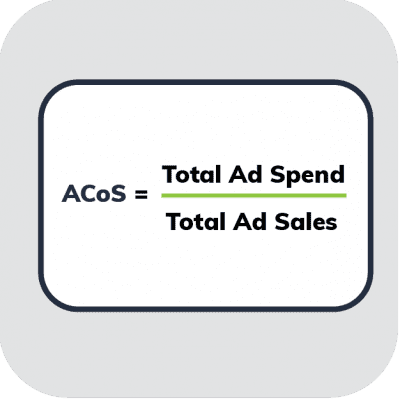
2. Advertising Cost of Sale (ACoS)
ACoS (or Advertising Cost of Sale), although the most common way to measure the success of Amazon campaigns, is not the best way. ACoS does not take into account the costs that come with making a sale – and accounting for those is the only way to truly know the impact of your advertising on your business. ACOS is not a good measure of profit. Profit can actually increase at a lower ACOS.
Take this scenario for example:
| Month | January | February |
| Revenue | $30,000.00 | $37,000.00 |
| Cost of Goods | $18,000.00 | $22,200.00 |
| Ad Spend | $3,000.00 | $4,500.00 |
| Profit | $9,000.00 | $10,300.00 |
| ACOS | 10.00% | 12.16% |

3. Automatic Targeting
Automatic targeting on Amazon means Amazon, by and large, chooses where and to whom your product ads are shown. Advertisers can adjust bids by ad group, but if multiple products are present in a group, there’s no way to know which product or targeting is the most successful. For this reason, we suggest limiting the number of products per ad group – either one product per ad group or in very tight, closely related segments.

4: Manual Targeting
Advertisers have more control over the targeting for these campaigns, and to a certain extent more control over bids and spend. You can choose to bid either on the ad group level or on the keyword level. We recommend bidding on the keyword level because it allows for the maximum amount of granularity.
How often to make changes?
The answer to this will depend a lot on your campaigns and your click volume. You want to make changes only when you have enough data to make an informed decision. Remember Amazon often has a 2 to 3 day reporting lagtime, so factor that in when you decide how often to make adjustments. Seasonality matters, too – if you’re in peak season for your items, you probably will need to make adjustments more often than off-peak.

Need a quick overview on Dynamic Bidding? Watch our explainer video:
Dynamic or Fixed Bidding
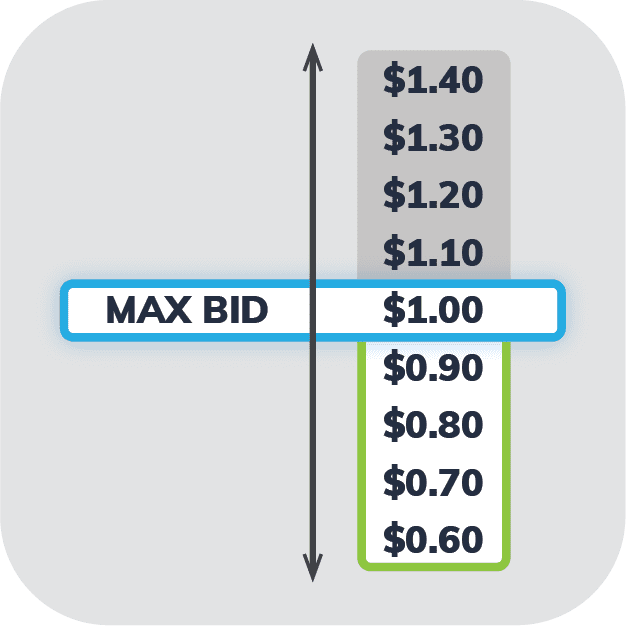
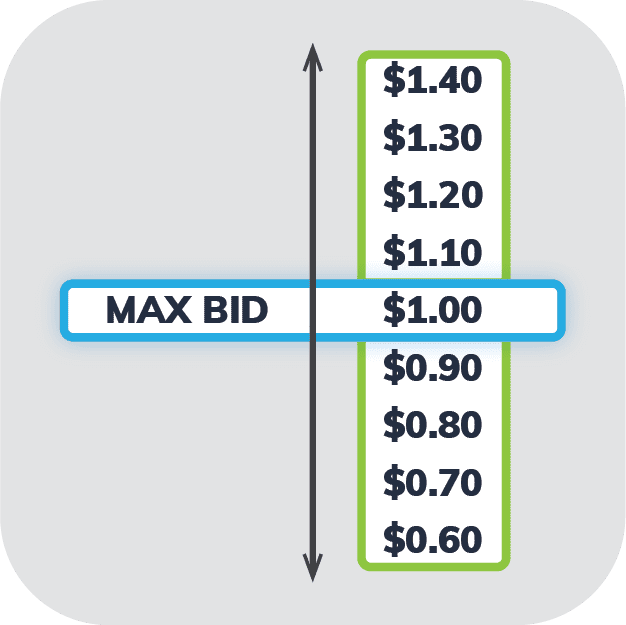
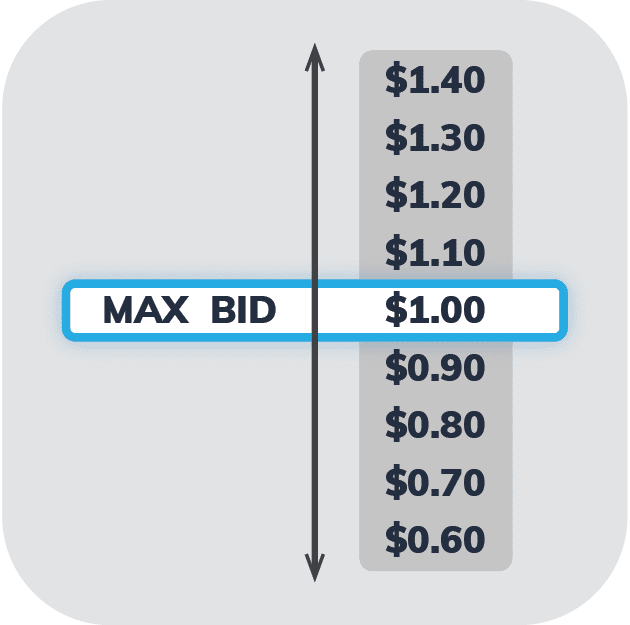
Dynamic Bidding
(Down Only)
What It Is:
Amazon will lower your bids — up to 100% — if your ad is less likely to convert.
When to Use:
This was Amazon’s previous default option and it’s the best option, in our opinion, for a profit-driven strategy. It preserves ad spend in situations where conversions are unlikely.
Dynamic Bidding
(Up and Down)
What It Is:
Amazon will raise your bid — up to 100% — if the likelihood of conversion is high, and decrease it when it is not. 100% increases are reserved for top-of-page placements (everything else has an upper limit of 50%.)
When to Use:
You can use this strategy and still maintain a profit-driven approach! It may even be a good idea if bids tend to be highly variable in your market, since it offers more flexibility than the other options. Just keep an eye on spend and be sure you’re comfortable spending 100% more than your bid for a click.
Fixed Bids
What It Is:
Your bid will be your default bid and any manual adjustments you set — and will not change based on likelihood of conversion.
When to Use:
We don’t recommend using this option. You will almost certainly overpay for a sizable fraction of your clicks, since Amazon will apply your bid to absolutely every placement regardless of the likelihood of conversion.

Watch the video below to get a quick run down on Bidding Placement:
Bidding by Placement
If you choose Dynamic Bidding, you can also choose specific placements to bid on: Top of Page and Product Page. The default setting is “Rest of Page”, which targets any other ad placements in the rest of the pages 2, 3, 4, and so on. You can apply an adjustment on top of each of these adjustments. For example, you could choose Top of Page and apply a 50% adjustment. If your bid was $1.00 – then it could only be increased to $1.50 to win the Top of Page placement.

Top of Page
Top of Page is the first row, on the first page of results. This is the most competitive advertising spot on Amazon – and the price matches.
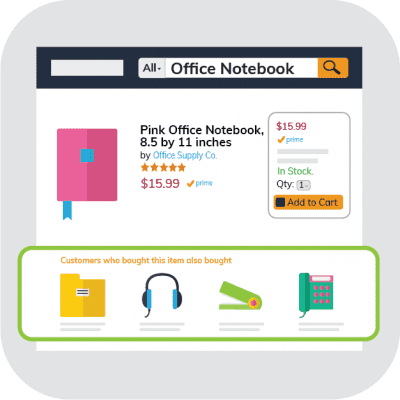
Product Page
If you choose this placement, your products can appear in the “Sponsored Products Related to this Item” on product pages and the add-to-cart page.

Bidding by Type

Although you can’t choose your ad placements for automatic campaigns, each ad group still has a maximum bid that can be adjusted according to the profitability of the ad group. That’s where your Amazon campaign bidding strategy comes in!
Each ad group also has four subgroups: close matches, loose matches, complements, and substitutes. You can assign an additional percentage to each of these subgroups, to indicate to Amazon to adjust the bid accordingly. For example, a -20% adjustment for loose matches will apply a bid decrease of 20% to every loosely matched placement.
Let’s take a look at each of these subgroups specifically:
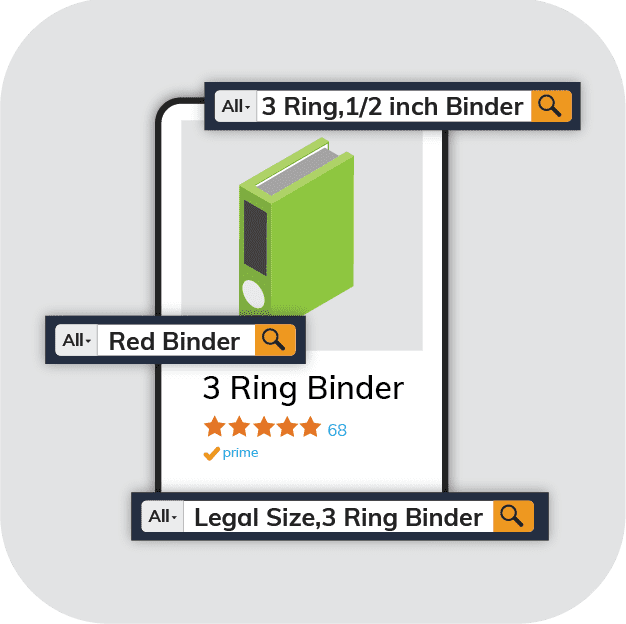
Close Match
These are placements that are closely matched to your product. If you sell Nike shoes, this could include “Nike men’s running shoes” or similar terms.

Complements
These are placements on the product pages of products that complement your items. In our tennis shoe example, complements might be athletic socks or other running gear.
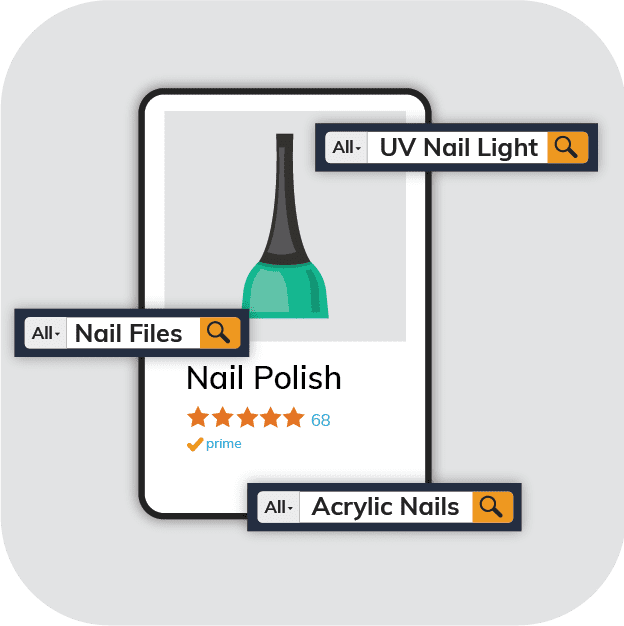
Loose Match
Loose matches are placements that are tangentially related to your products. If you sell nail polish, loose match terms could include acrylic nails, UV nail light, or nail file.
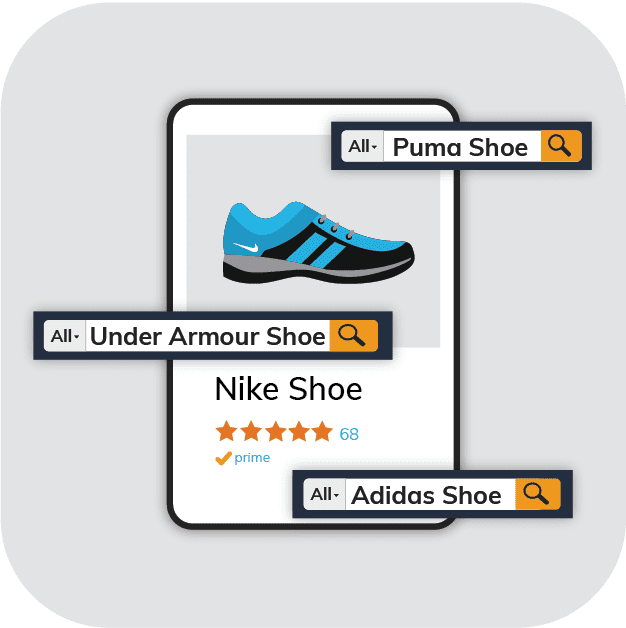
Substitutes
These are placements on products that are substitutes for your items. Products similar to yours may be sold by a different brand, for example.
Segment Your Campaigns By Targeting Type
If you choose to adjust bids by match type, you might choose to structure your campaigns to allow you to adjust bids for each type independently. That way, you know that when you adjust your bids your changes are having an equal impact on profitability across the entire ad group. As a bonus – structuring your campaigns like this gives you a lot of great insight into which match types are performing best for your products!
We did just that with one retailer and saw fantastic results! Check it out in our case study, A New Amazon Campaign Structure: Separating Targeting Types into Their Own Campaigns.
Here’s a quick sneak peek, illustrating some possible changes to bids based on this structure:


Amazon Suggested Bids for Keywords
Amazon Ads offers suggested bids for many keywords and ad groups as well. If you want a rough idea of how much it costs to win a bid for a specific keyword – the suggested bid can offer some insight into how much your competitors are paying.
Keep in mind that the suggested bid can be very high sometimes (ex. $20+ ) — if it doesn’t make sense for your business goals, don’t blindly follow the Amazon suggested bid.
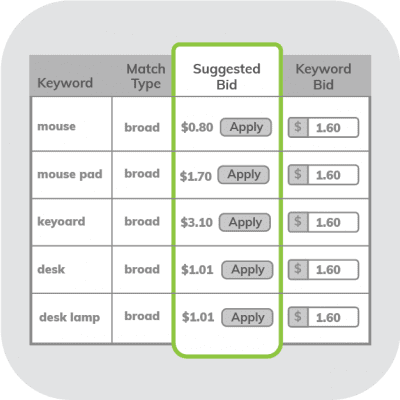

Special Bidding Situations
Automated systems can’t handle these — that includes Amazon’s automated bidding. In order to prepare for holidays and special sales, you will need to spend a little more time managing your account to include daily fluctuations. Here’s how to build a solid Amazon campaign bidding strategy for Black Friday, Cyber Monday, and Prime Day.
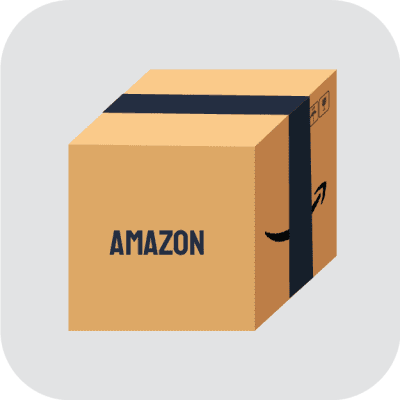
Black Friday and Cyber Monday
Dive into your data from last year. Which products were your top performers? Do you have certain category that does better during this time of the year? Prepare to allocate spend to those products that have historically done well. Remember — with increased competition comes increased costs, so be prepared to need to raise some bids if your business is highly seasonal around the holidays.
Want the full prep list?
7 Ways to Prepare for Black Friday and Cyber Monday on Amazon
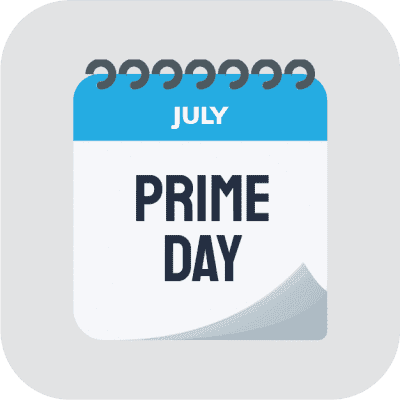
Prime Day
For Sponsored Products, make sure your budgets and bids are optimized for maximum impressions, clicks, and conversions. If you’re running Sponsored Brand campaigns, have a clear goal in mind, like new customer acquisition. Lastly, if you’re running Display campaigns make sure your audiences are built correctly to target the ideal customer.
Get ready for the holidays!
How to Get Ready for Prime Day

